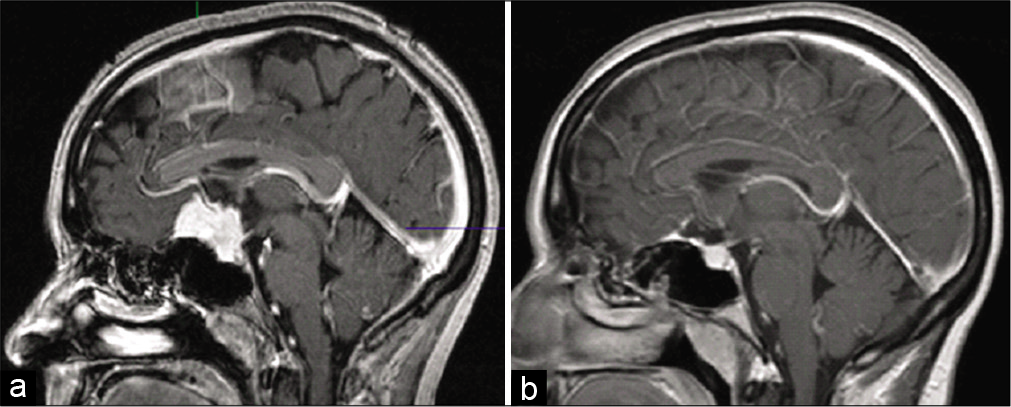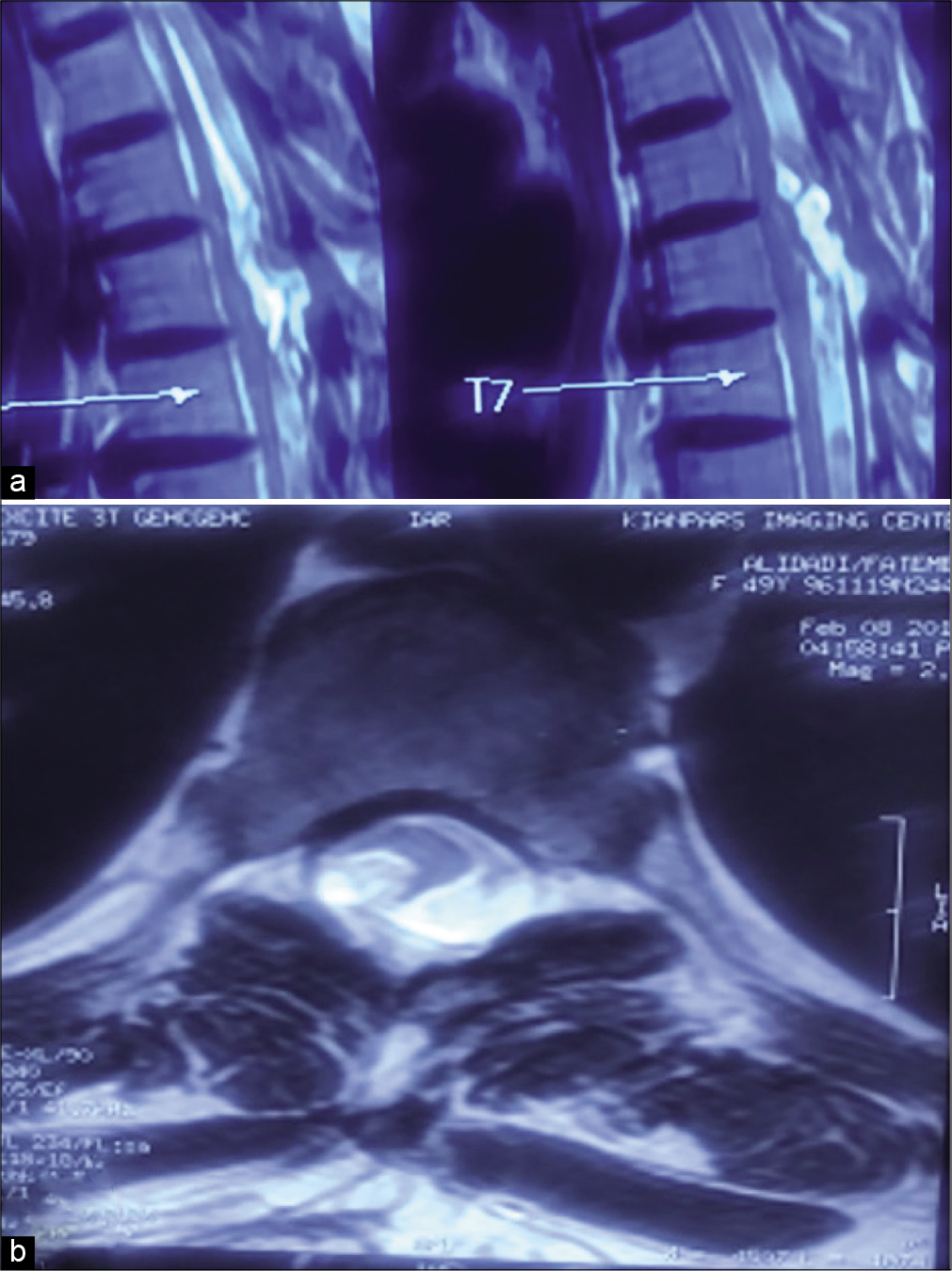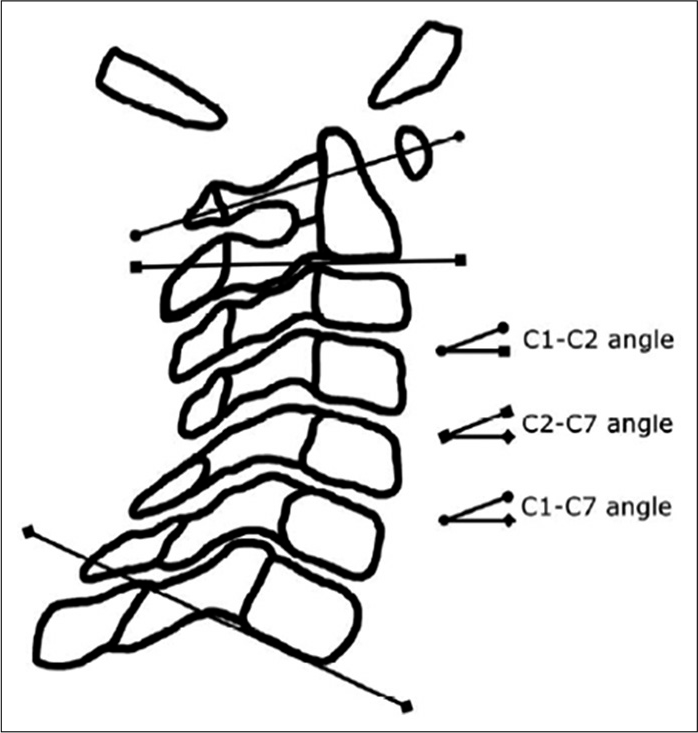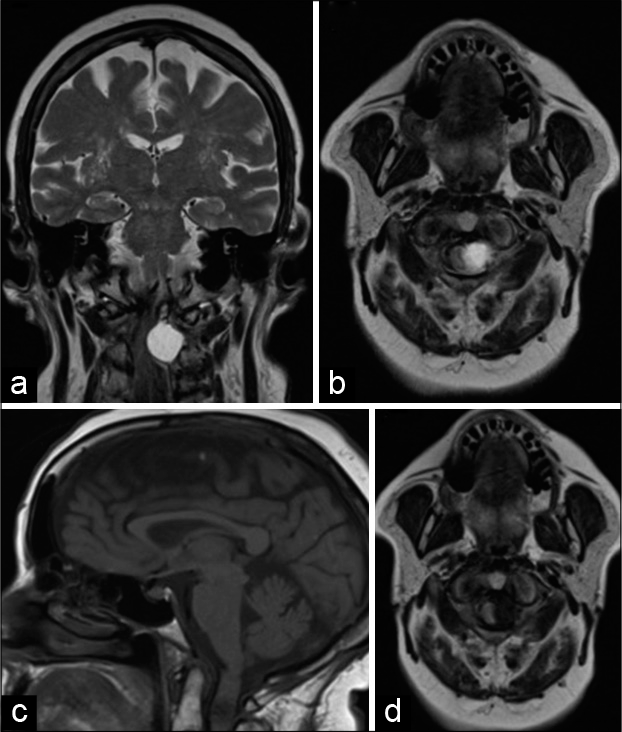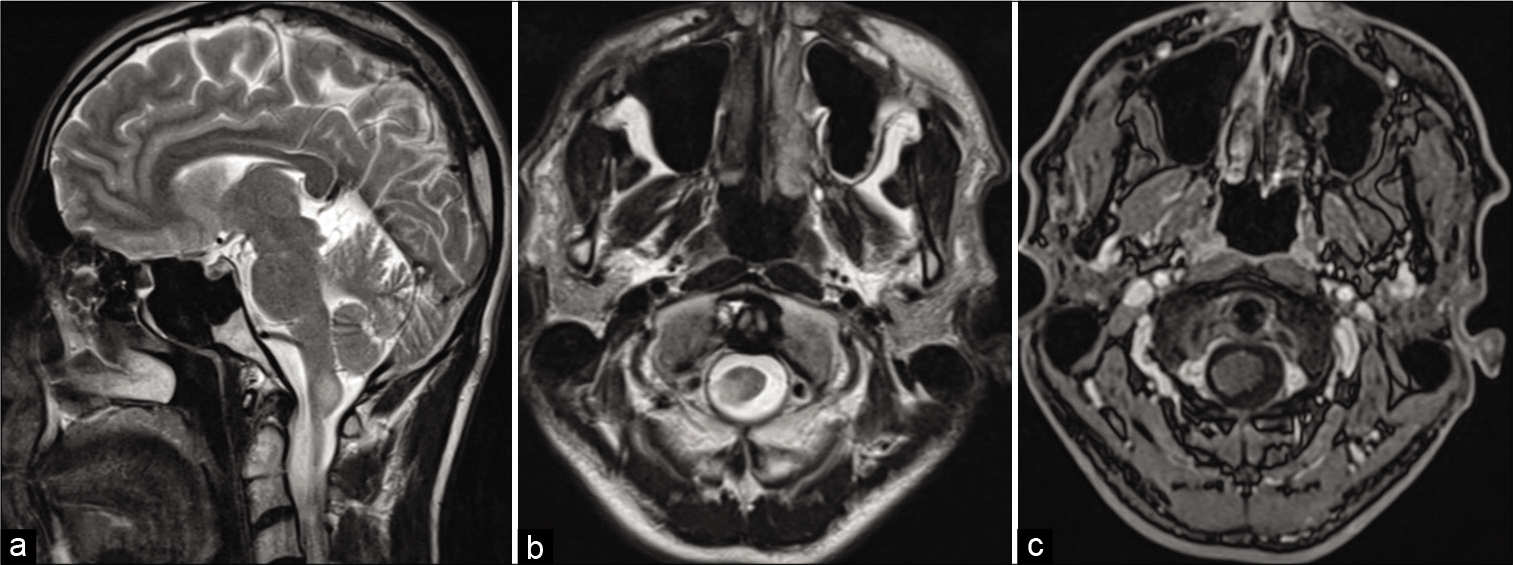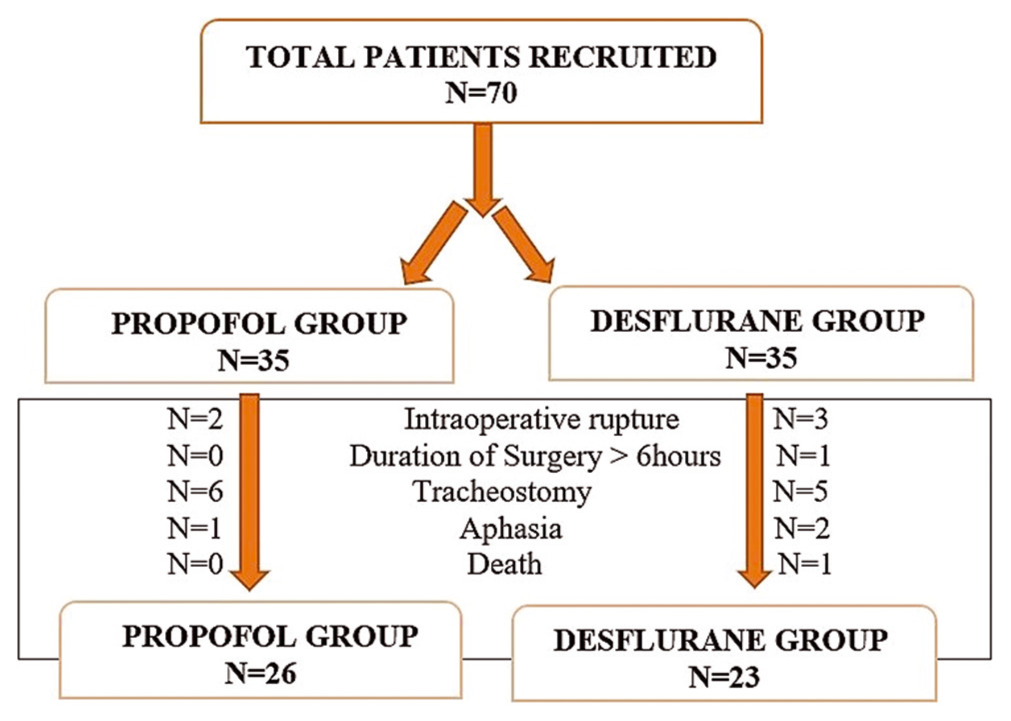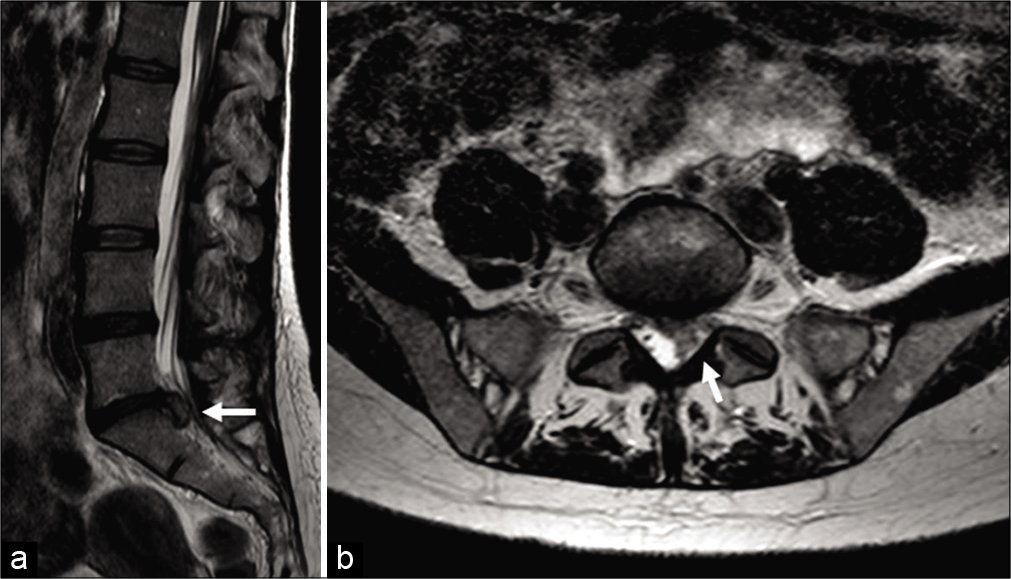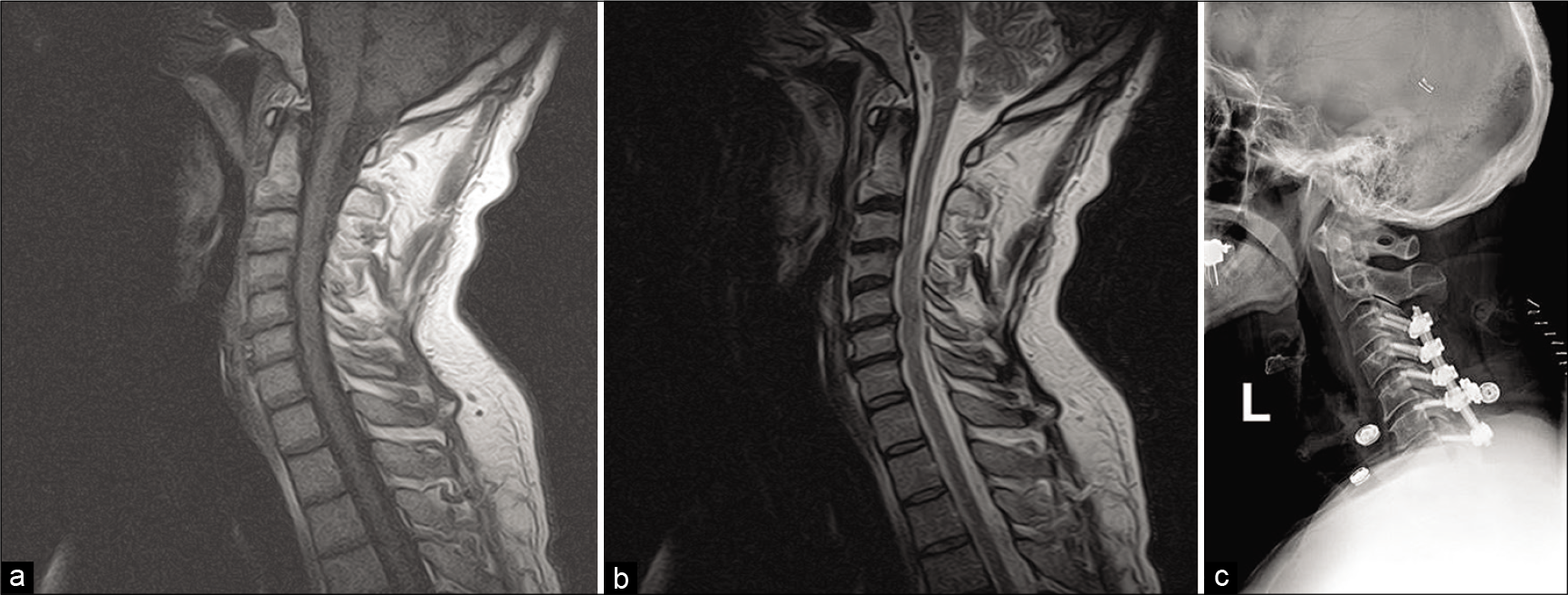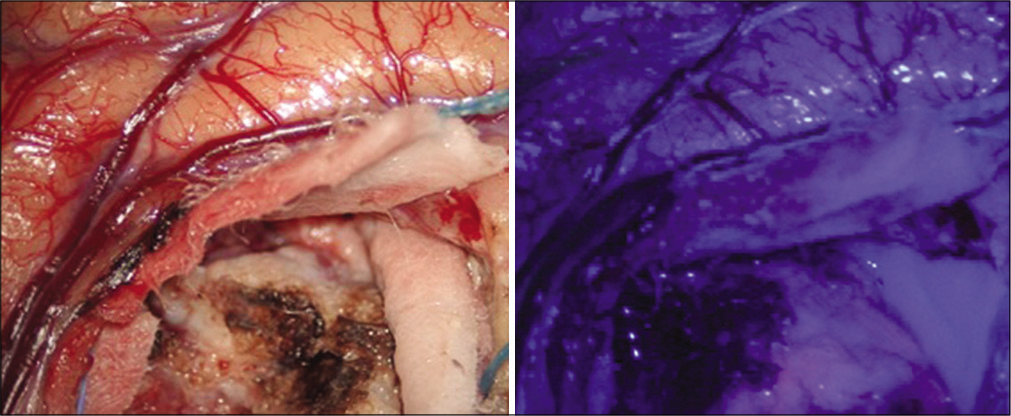The transpalpebral approach “eyelid incision” for surgical management of intracranial tumors: A 10-years’ experience
Date of publication: 11-Jul-2020
Background: The minimally invasive approaches to the anterior skull base region through fronto-orbital craniotomy remain a highly accepted option that gains countenance and predilection over time. The transpalpebral “eyelid” incision is an under-utilized and more recent technique that offers a safe efficient corridor to manage a wide variety of lesions.
Intramedullary mature teratoma with an exophytic component in an adult: Report of a case and literature review
Date of publication: 11-Jul-2020
Background: Intramedullary mature teratomas (IMMTs) are rare. This is particularly true in the adult population.
Technical outcome of atlantoaxial transarticular screw fixation without supplementary posterior construct for rheumatoid arthritis
Date of publication: 11-Jul-2020
Background: transarticular screw (TAS) fixation without a supplementary posterior construct, even in rheumatoid arthritis (RA) patients, provides sufficient stability with acceptable clinical results. Here, we present our experience with 15 RA patients who underwent atlantoaxial (AA) TAS fixation without utilizing a supplementary posterior fusion.
Clinicoradiological outcomes of Goel and Harms fixation for atlantoaxial instability: An institutional experience
Date of publication: 11-Jul-2020
Background: Few studies have reported on the long-term outcomes of Goel and Harms C1-C2 fusions in the Asian population.
Intradural synovial cyst of the upper cervical spine: A rare cause of symptomatic cord compression
Date of publication: 11-Jul-2020
Background: Synovial cysts are commonly observed soft-tissue masses of the spine, typically extradural and located in the lumbar region. We describe a very rare symptomatic case of a C1-C2 intradural synovial cyst.
Facial pain as an initial manifestation of intramedullary cervical spinal cord tumor: A case report and literature review
Date of publication: 04-Jul-2020
Background: Facial pain resembling trigeminal neuralgia is not a common clinical feature of cervical spinal cord tumor. Depending on nature of the facial pain, differential diagnosis tends to include neurovascular conflict, multiple sclerosis, cerebellopontine angle tumors, herpes zoster, facial injuries, and other conditions involving trigeminal nerve, ganglion, and root. Here, we present a unique case of pain in trigeminal distribution due to an intramedullary tumor in the upper cervical spinal cord.
Comparison of postoperative cognitive dysfunction with the use of propofol versus desflurane in patients undergoing surgery for clipping of aneurysm after subarachnoid hemorrhage
Date of publication: 04-Jul-2020
Background: Cerebral aneurysm rupture is a distinct entity among various causes of cerebrovascular accident. Despite the current concept of early surgical clipping to prevent consequences of ruptured aneurysm in good grade subarachnoid hemorrhage patients, 40–50% have postoperative cognitive dysfunction (POCD) on a long- term basis. Here, we compared the effect of two commonly used anesthetic agents on cognitive function following cerebral aneurysmal surgery, i.e., propofol and desflurane.
Dorsal migration of lumbar disc fragments causing cauda equina syndromes: A three case series and literature review
Date of publication: 04-Jul-2020
Background: Dorsal migration of an intervertebral lumbar disc fragment is exceedingly rare and may result in spinal cord or cauda equina compression. Radiologically, these lesions may be misdiagnosed as extradural masses or epidural hematomas.
Cervical intramedullary spinal cavernoma in setting of unresolved myelopathy: A case report
Date of publication: 04-Jul-2020
Background: Spinal cavernous malformations are rare, accounting for approximately 5–12% of all spinal cord vascular lesions. Fortunately, improvements in imaging technologies have made it easier to establish the diagnosis of intramedullary spinal cavernomas (ISCs).
Glioblastoma with primitive neuronal component: A case report and considerations of fluorescence-guided surgery
Date of publication: 04-Jul-2020
Background: Glioblastoma with primitive neuronal components (GB/PNC) is an extremely rare type of glioblastoma characterized by presenting histological and cytogenetic features of both entities. The mixed nature of these tumors limits the imaging diagnosis and supposes a therapeutic dilemma.


